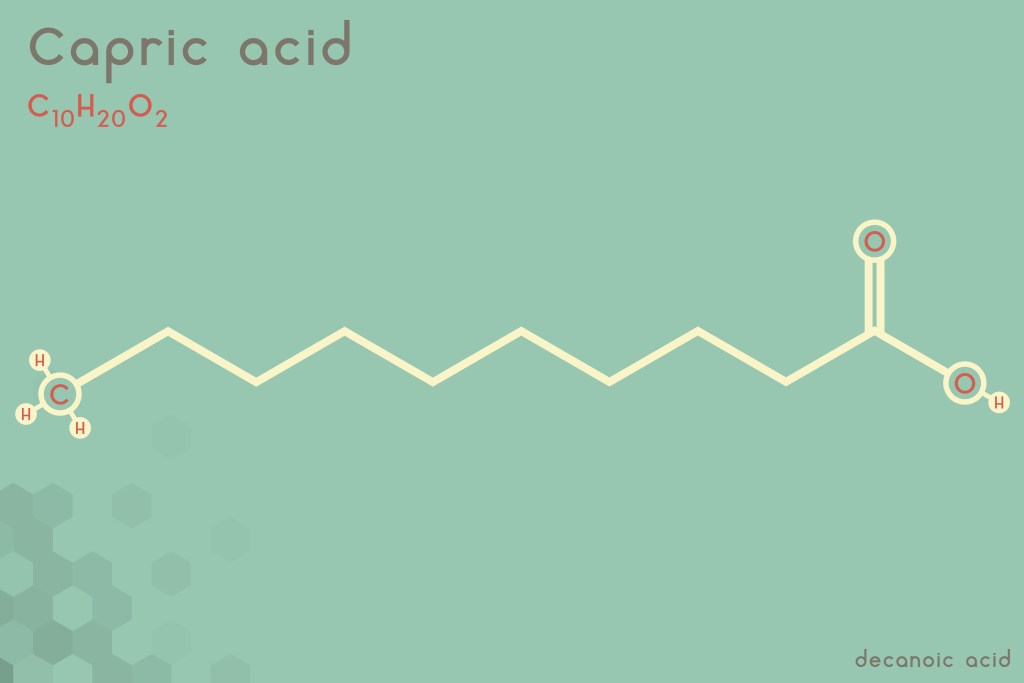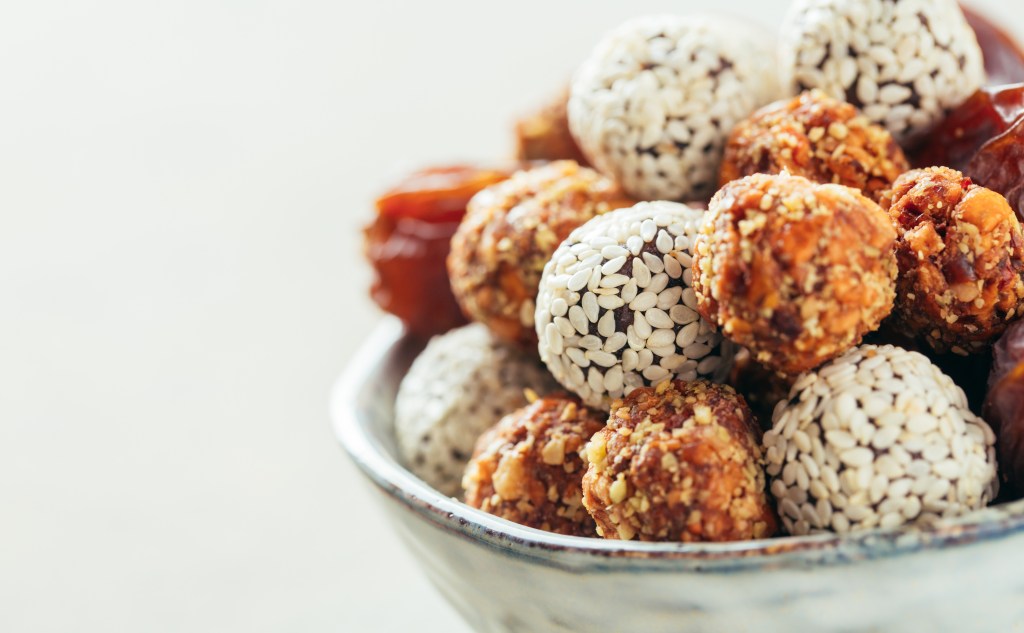At a glance
Medium-chain triglyceride (MCT) oil consists of fatty acids derived from coconut or palm oil. The four primary types, C6, C8, C10, and C12, each offer distinct fatty acid profiles and benefits for metabolic and cognitive health. Certain MCts can also help manage microbial overgrowth and are easily incorporated into coffee, salad dressing, soups, or other dishes.
Medium-chain triglyceride oil, widely known as MCT oil, consists of various short-chain fatty acids, each offering impressive benefits.
To determine the best MCT oil for your needs, it’s crucial to understand the unique chemical compositions and specific health effects of these fats.
Let’s compare different MCT oils and discover how to incorporate them into your routine to promote weight loss, enhance energy production, and lower your risk of microbial infections.
What is MCT oil?
MCT oil is a widely used supplement composed of medium-chain triglycerides (MCTs), a group of fatty acids known for their significant health benefits.
Most MCT oils are derived from coconut and palm oil, and depending on their source and extraction method, the oil may vary in its specific fatty acid composition.
While MCTs are classified as a type of saturated fat, they have a different chemical composition than long-chain triglycerides, which affects how they’re metabolized in the body.
MCTs are rapidly absorbed and transported into the liver, where they can be immediately converted into ketones, a highly efficient energy source, especially for the brain, muscle cells, and heart tissue.
“Because MCTs can be quickly converted into ketones, MCT oil is a popular supplement for those following a keto diet as it can enhance fat-burning by boosting ketosis and increase energy levels,” explains Dr. Berg.
Watch the video below to learn more about the different types of MCTs.
MCT oil forms compared
MCT oil typically comprises four different types of medium-chain fatty acids, which vary in chain length and are classified based on their number of carbon atoms.
Here’s how MCTs are categorized and the health benefits associated with each of these healthy fats.
Caproic acid (C6)
Caproic acid contains six carbon atoms, which makes it the shortest of all MCTs.
This fatty acid is present in relatively small amounts in most MCT oils, usually making up less than two percent of the total MCT content.
In addition, caproic acid has a pungent odor and unpleasant taste and is often removed from MCT oil supplements to improve taste and reduce potential digestive discomfort.
While caproic acid is less common than other MCTs, such as caprylic and capric acid, it still can contribute to MCT oil benefits due to its ability to boost energy levels and potential antimicrobial properties.
Caprylic acid (C8)
Caprylic acid typically comprises between 40 to 70 percent of most MCT oil products and has been widely studied for its numerous health benefits.
Research published in Frontiers in Nutrition suggests that caprylic acid intake is associated with enhanced cognitive function and a lower risk of neurodegenerative disorders, as brain cells readily utilize MCT-derived ketones for energy, which supports brain health.1
The authors summarize, “MCT supplementation is an inexpensive and simple ketogenic intervention, proven to benefit both individuals with normal cognition and those suffering from mild cognitive impairment, Alzheimer’s disease, and other cognitive disorders.”
In addition, C8 promotes the oxidation of fatty acids, which enhances the body’s ability to use stored body fat more efficiently. This explains why MCT oil can help aid weight loss and prevent weight gain, thereby supporting metabolic health.
Another notable benefit of caprylic acid is its potential to protect against microbes, including Streptococcus and Staphylococcus species. These antimicrobial properties may help combat harmful bacteria, which supports overall immune health and reduces the risk of serious infections.

Capric acid (C10)
Capric acid typically makes up 10 to 20 percent of MCT oil, making it the second most abundant medium-chain fatty acid. Its slightly longer chain length contributes to a more sustained release of energy compared to shorter MCTs such as caprylic and caproic acid.
In addition, due to its chemical structure, capric acid has potent antifungal effects and has been found especially beneficial against persistent yeast infections.
A study published in Antimicrobial Agents and Chemotherapy confirms that capric acid can effectively and rapidly eliminate different strains of Candida albicans, a fungus associated with oral thrush and vaginal yeast infections.2
It’s believed that capric acid interferes with microbial cell membranes, which can trigger the collapse and subsequent death of pathogenic fungi.
Lauric acid (C12)
Lauric acid, the longest MCT containing 12 carbon atoms, is known for its impressive antiviral benefits.
Once ingested, lauric acid is rapidly converted into monolaurin, a potent monoglyceride that has the potential to disrupt viral membranes and inhibit virus proliferation.
Lauric acid has been found effective against various viral infections, including:
- Herpes simplex
- Influenza
- Hepatitis
- Measles
- Yellow fever
- Zika virus
In addition, evidence published in the Journal of Nutritional Science found that coconut oil-derived MCT oil intake supported rapid relief of common COVID-19 symptoms, highlighting its potential antiviral properties and ability to enhance the body’s immune functions.3

What is the best MCT oil form for you?
The ideal MCT oil for you depends on your specific health goals and personal needs.
If you’re seeking a quick energy boost and enhanced mental clarity and sharpness, choose an MCT oil rich in caprylic acid (C8), as it’s rapidly absorbed and converted into ketones. For a steadier, longer-lasting energy source, opt for a blend that includes both caprylic and capric acid (10).
MCT oils containing predominantly C8 and C10 are also ideal for those who want to promote weight management or enhance athletic performance, as they provide sustained fuel and support metabolic health.
Those considering MCT oil to manage or reduce the risk of microbial infections should opt for oils that contain a higher proportion of lauric acid (C12) in addition to C8 and C10.
It’s recommended to choose organic MCT oil derived from coconut oil, as it generally contains a higher concentration of beneficial medium-chain fatty acids and fewer pollutants compared to MCTs sourced from palm kernel oil.

How to use MCT oil
Because it’s an excellent source of healthy fats, MCT oil is a staple on the keto-approved food list, making it a popular choice for those following a nutritious low-carb diet such as Healthy Keto®.
MCT oil can be used both as a dietary supplement and a culinary oil, depending on your needs and preferences.
Here’s how you can incorporate MCT oil into your routine.
1. Using MCT oil as a supplement
As a supplement, it can be taken directly to boost energy and support ketosis. You can also incorporate MCT oil into your favorite smoothie or protein shake.
It’s generally recommended to start with a small amount, such as half a teaspoon per day, and gradually increase the dosage to 1 to 2 tablespoons daily. This slow introduction helps prevent digestive discomfort while allowing you to enjoy the health-promoting benefits of MCT oil.
Taking MCT oil in combination with fat-soluble vitamins can enhance their absorption and effectiveness. This pairing allows for better utilization of essential nutrients such as vitamins A, D, E, and K, thereby promoting overall health and well-being.

2. Culinary use
MCT oil is typically flavorless and odorless, making it a versatile option for adding health-promoting fatty acids to various dishes without altering their taste.
Its neutral profile allows MCT oil to blend seamlessly into many keto-friendly foods, including:
- Guacamole
- Salad dressings
- Nut butters
- Keto fat bombs
- Soups and stews
- Baked goods
While MCT oil can be used as a cooking oil, it’s best suited as a finishing oil due to its low smoke point, which means it can degrade and lose its beneficial properties when exposed to high heat. Instead, use MCT oil to add a boost of healthy fats to dishes after cooking.
3. Bulletproof coffee
Adding MCT oil and grass-fed butter to your morning coffee is an excellent way to create a creamy, energy-boosting beverage, often referred to as bulletproof coffee.
This combination not only supports ketosis but also keeps you feeling full and focused throughout the morning without breaking a fast, making it a popular choice for those practicing intermittent fasting.
Bulletproof coffee helps extend fasting periods by providing sustained energy and maintaining fat burning. This can help maximize the health benefits of caloric restriction, including weight loss and better metabolic health.
Key takeaways
- MCTs are beneficial fatty acids that can help boost ketosis, enhance energy levels, and reduce the risk of microbial infections.
- The best MCT oil for quick energy and mental focus contains caprylic and capric acid.
- For steady, longer-lasting energy and antimicrobial support, choose an MCT oil blend that contains lauric, caprylic, and capric acids.
- MCT oil is flavorless and can be added to bulletproof coffee, baked goods, soups, and various other dishes.
FAQ
1. Which form of MCT oil is best?
For a rapid energy boost and enhanced mental focus, a medium-chain triglyceride (MCT) oil rich in caprylic acid (C8) is best. A blend of caprylic (C8) and capric acid (C10) is ideal for more sustained energy and improved metabolic health.
To manage or reduce the risk of microbial infections, choose an MCT oil with a higher proportion of lauric acid (C12) in addition to capric and caprylic acid.
2. Is C8 MCT oil the best?
C8, also known as caprylic acid, offers a quick boost of energy and has been linked to potential antibacterial effects.
In addition, C8 MCT oil has been found to promote healthy brain function and may reduce the risk of neurodegenerative conditions such as Alzheimer’s disease and dementia.
3. What are the downsides of MCT oil?
While MCT oil is generally considered safe and well-tolerated, it can cause digestive discomfort, such as nausea or diarrhea, if introduced too quickly or consumed in large amounts.
Therefore, it’s recommended to start with a small dose and gradually increase MCT oil intake to allow your digestive system to adjust.
4. Which is better, C8 or C10 MCTs?
Both C8 and C10 MCTs are rapidly absorbed and quickly converted into ketones, which promotes efficient energy production and supports ketosis. While C8 provides faster effects for immediate energy, C10 offers a steadier, longer-lasting energy source.
Many people opt for a blend of C8 and C10 to maximize the health benefits of MCT oil, including mental clarity, better metabolic health, and enhanced energy levels.
Sources
- https://www.ncbi.nlm.nih.gov/pmc/articles/PMC9334743/ ?
- https://pmc.ncbi.nlm.nih.gov/articles/PMC90807/#:~:text=The%20results%20show%20that%20capric,disrupted%20or%20disintegrated%20plasma%20membrane. ?
- https://www.cambridge.org/core/journals/journal-of-nutritional-science/article/virgin-coconut-oil-vco-supplementation-relieves-symptoms-and-inflammation-among-covid19-positive-adults-a-singleblind-randomized-trial/C373F447EA944681684220143EBDF0F0 ?















